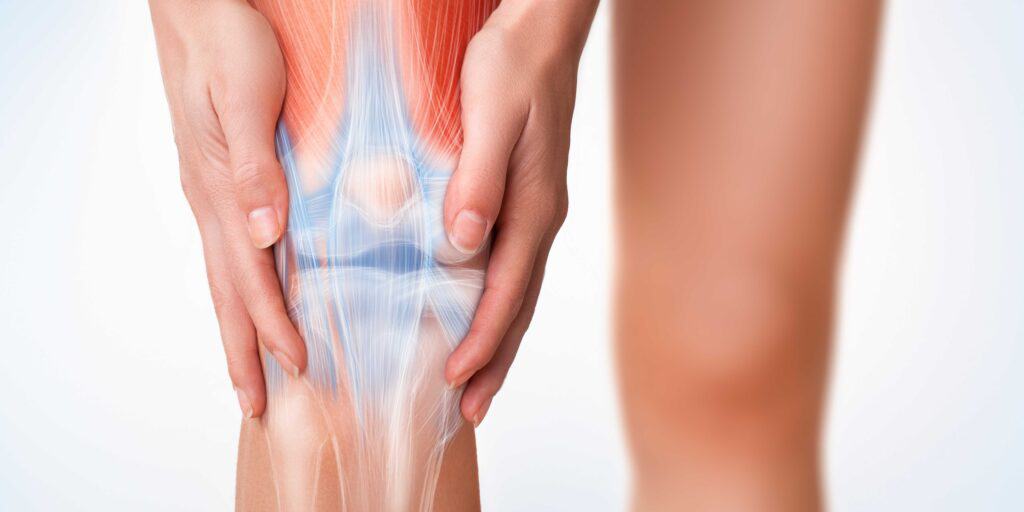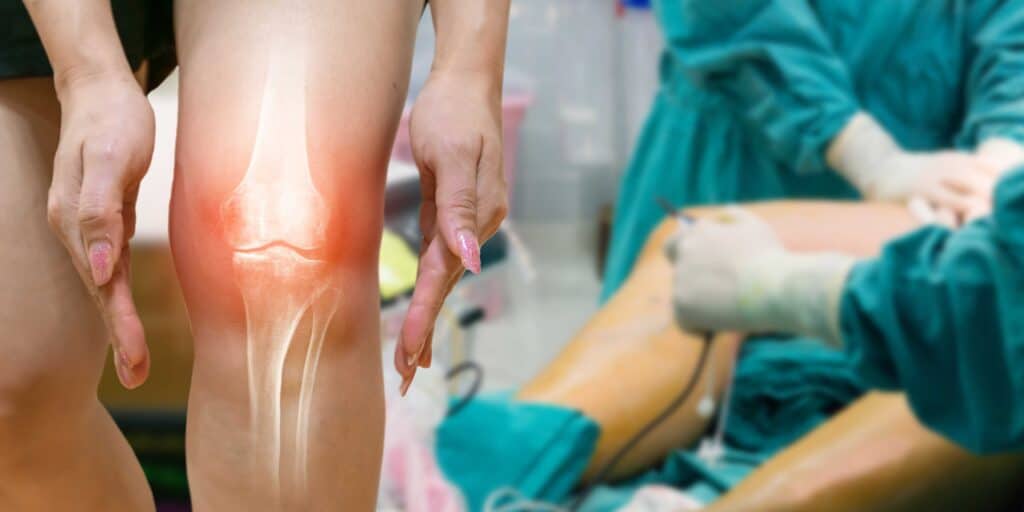

Knee arthritis is an umbrella term that refers to a group of conditions that affect the cartilage in the knee joint. Cartilage is the flexible coating on the bone ends that functions as a lubricant and cushion, allowing for smooth bending or straightening movements without feeling any discomfort; however, when this protective layer erodes away due to conditions like osteoarthritis there may be increased rubbing between bones leading to pain and deformity, such as knock-knees or bowlegs.

One of the most common symptoms of knee arthritis is pain. This pain typically gets worse with activity and improves with rest. For many people with knee arthritis, simple everyday activities such as walking or climbing stairs can be difficult. Other symptoms of knee arthritis may include stiffness, increased fluid in the joint (which can cause swelling), and bowleg deformity. With joint movement, you may also hear a creaking sound or feel a grating sensation (known as crepitus). Some people find that their symptoms worsen on days when it is cold and damp outside. If you are experiencing any of these symptoms, it is important to see a doctor for diagnosis and treatment.
There are a number of different treatments that can help to relieve these symptoms and improve knee function. Weight loss and physical rehabilitation exercises are particularly important for treating knee arthritis, as they can help to reduce the amount of weight bearing on the knee joint. Canes, knee braces, and other assistive devices can also be helpful. Medications such as acetaminophen or ibuprofen can be used to relieve pain, while therapeutic joint injections may provide longer-lasting relief. Surgery may be an option if other treatments do not sufficiently improve symptoms or if there is a significant loss of function. With proper treatment, knee arthritis does not have to significantly interfere with your daily life.
Osteoarthritis of the knee is a degenerative joint disease that is the most prevalent type of arthritis in the knees. It can also affect other joints but often worsens over time. Inflammation and pain are caused by cartilage degradation. osteoarthritis of the knee is a debilitating disease that can lead to loss of mobility and independence. There are treatments available to treat the symptoms and slow the progression of the disease. If you think you may be suffering from osteoarthritis of the knee, it is important to see a doctor for a proper diagnosis and treatment plan.
This degenerative joint disease makes it painful to even perform daily activities. The good news is that there are a number of treatment options available that can help lessen the pain and improve mobility. For instance, doctors often recommend a combination of anti-inflammatory drugs and physical therapy for patients with moderate osteoarthritis of the knee.
This can help to reduce inflammation and pain and increase the range of motion. If the osteoarthritis is more advanced, however, medical professionals might recommend therapeutic injections or surgery. These more aggressive treatments can be very effective in alleviating symptoms and improving quality of life. So, if you are living with osteoarthritis of the knee, be sure to talk to your doctor about all of the treatment options available to you.
Although arthritis is a possibility, there may be other causes for your symptoms. Conditions such as Baker’s cyst (cyst at the back of the knee), muscle, tendon, and ligament injuries, tumors, blood vessel problems, and even bone fractures, can result in pain behind the knee. To identify the precise reason or causes of discomfort behind the knee, a doctor visit may be required, especially if the pain is recurrent or chronic. Joint swelling, stiffness, and discomfort are some of the typical signs of arthritis. Along with soreness behind your knee, if you experience any of these conditions, it’s conceivable that arthritis is at blame. But a precise diagnosis can only be given to you by a doctor.
Together with your doctor, you can create a pain-relieving treatment plan once the source of your discomfort has been identified.
There are a number of exercises that can help with arthritis in the knees, including strengthening leg muscles. By reducing pressure and tension on these joints, this support may help someone feel better while being more active overall! The following list includes some knee-friendly workouts:
When extra fluid gathers in or around your knee joint, it can cause swelling. This problem may be referred to as an effusion in your knee joint by medical professionals.
Trauma, overuse injuries, or an underlying illness or condition can all cause knee swelling. Your healthcare professional may need to test a sample of the fluid for an infection, disease, or blood from an injury in order to determine the reason for the swelling.
Swollen knees are often caused by osteoarthritis, injury, or infection. However, there are other inflammatory conditions that can also cause swelling in the knee, such as gout, lupus, and thyroid disease. If you have recently experienced a sudden onset of pain and swelling in your knee, it is important to see a doctor to determine the cause and receive proper treatment.

There are a few treatments available for a swollen and painful knee. In the early stages, one could attempt to ice pack wrapped cloth against the knee for 15-20 minutes at a time.
Additionally, one could apply a band or compression sleeve, or bandage around the knee joint to maintain constant pressure.
Lastly, anti-inflammatory drugs are another option. All of these treatments could potentially help lessen the pain and swelling associated with a swollen and painful knee. If you are experiencing severe pain or swelling, however, it is always best to consult with a medical professional to ensure that you are receiving the best possible treatment.
When it comes to natural remedies for knee pain, there are a few options that are worth considering. Ginger, lemon, and Epsom salt all have anti-inflammatory properties that can help to reduce swelling and discomfort. If you’re looking for a natural way to ease your knee pain, these ingredients may be worth a try. As always, however, be sure to consult with your doctor before trying any new remedy, especially if you have a health condition that could be exacerbated by the treatment. With a little trial and error, you may be able to find a natural remedy that provides some relief from your knee pain.
There are several factors that can cause us trouble when bending our knees. Let’s take a look at a few of them.
Tight muscles: Bad posture when walking, standing, and sitting can lead to muscular problems in the back and thighs, which may affect knee bending. Tight muscles may also be a sign of underlying problems in the back and knee.
Meniscus Tear: Meniscus tears whether lateral or medial may cause excruciating pain when turning or engaging in high-impact activities like jumping.
Jumper’s Knee: Patellar tendonitis is referred to as Jumper’s Knee. This condition can be debilitating with pain when walking, especially when stopping, and difficulty with stairs and squatting.
Runner’s Knee: As its name implies, it is widespread among runners and joggers. The underlying problem is softening of the cartilage over the kneecap, and the myriad other issues that results in.
If you’re experiencing pain when bending your knees, it’s important to consult with a medical professional to determine the root cause and get appropriate treatment.
Knee pain is a very common medical complaint. Overuse injuries, arthritis, and trauma are a few typical reasons of knee pain. Let’s take a closer look at some of the most common causes of knee pain.
One of the most common causes of knee pain is overuse injuries. These occur when you repetitively use the same motion over and over again. For example, if you’re a runner, you’re more likely to experience a runner’s knee, also known as patellofemoral pain syndrome. This is pain under or around the kneecap that is frequently caused by softening of the kneecap cartilage.
Another common cause of knee pain is osteoarthritis. This is a degenerative disease that results in the loss of joint cartilage in the joints, which is the most common type of arthritis in the knees. This occurs when the cartilage in the joints breaks down, causing pain and stiffness.
Finally, trauma such as fractures or dislocations can also cause knee pain. These injuries usually occur from falls or accidents and can be quite serious. If you’ve experienced trauma to your knee, it’s important to see a doctor right away so that you can get the proper treatment.
Knee pain is very common, but there are many different causes. If you’re experiencing knee pain, it’s important to talk to your doctor so that you can get an accurate diagnosis and treatment plan.
There are many reasons why people suffer from knee pain for an extended period before seeking treatment. Some people may not realize they have a problem and others may be in denial about the extent of their injury. Additionally, some people may feel like they cannot afford to see a doctor or do not have time for treatment. Hopefully, this blog post will help to educate people on the importance of seeking treatment for knee pain and provide them with information on how to get the best care possible.
These treatments, whether used singly or in combination, can lessen discomfort, promote mobility, and enhance the quality of life.
One of the first options that most doctors try is a lifestyle change. This might involve losing weight; for every kilogram lost, there is four kilograms less pressure on the knees. Physical activity and therapy are also important in strengthening and increasing flexibility. Medicines that reduce inflammation can also be helpful in relieving pain caused by arthritis. Oral supplements such as Glucosamine/chondroitin may relieve knee arthritis pain.
These are just some of the available treatments for knee pain. It is important to talk to your doctor to find out which option or combination of options is right for you.

Knee surgery is often seen as a last resort for treating knee pain, as there are inherent risks associated with the surgery itself. Some of these risks include infection, blood clots, and damage to surrounding tissues or nerves. It is important to weigh the pros and cons of surgery carefully before deciding. We acknowledge that some individuals do progress to the point where surgery is necessary, but only after having tried all other treatment alternatives.
Lorem ipsum dolor sit amet consectetur adipiscing elit ut arcu a dignissim suscipit non ac eget tellus in nisl mauris nec.
